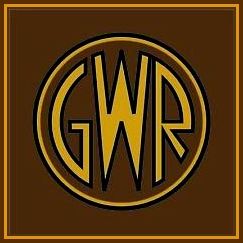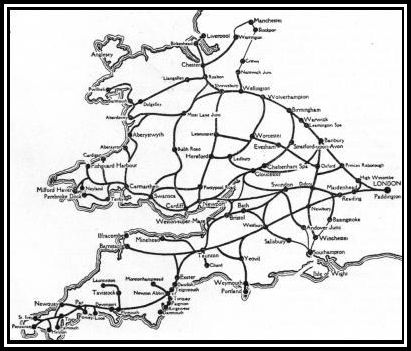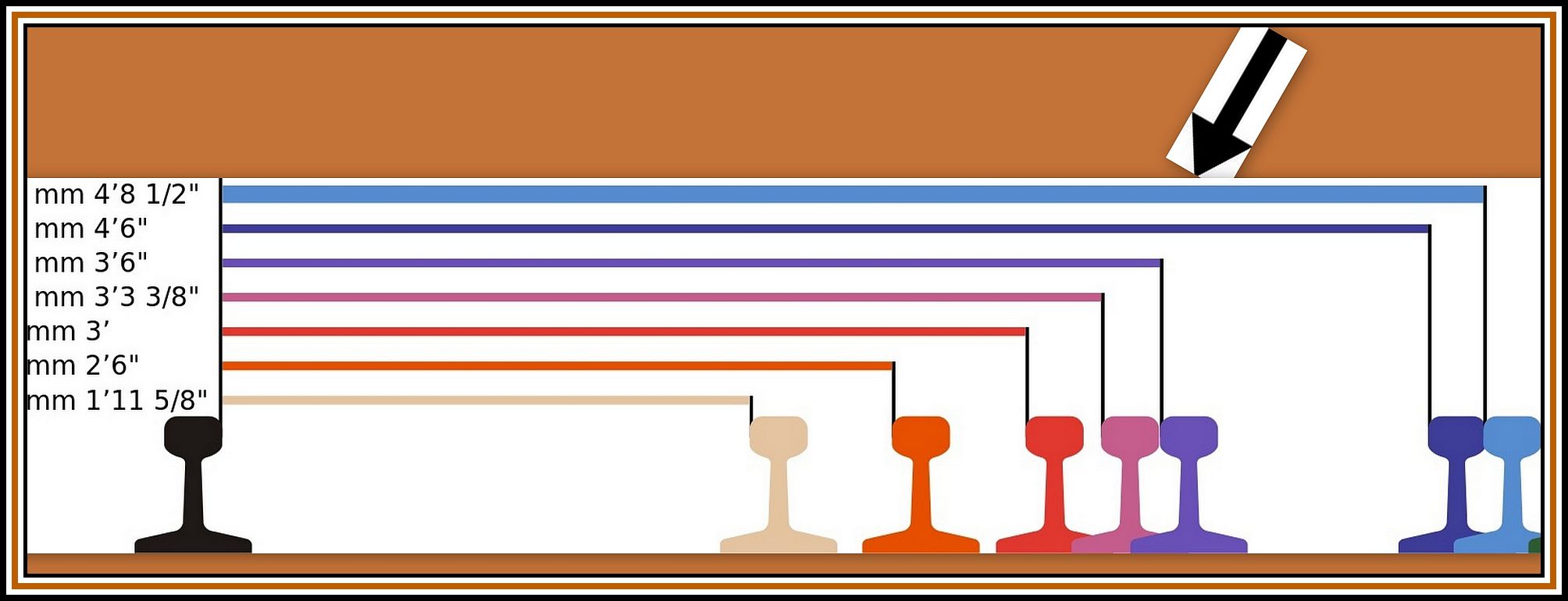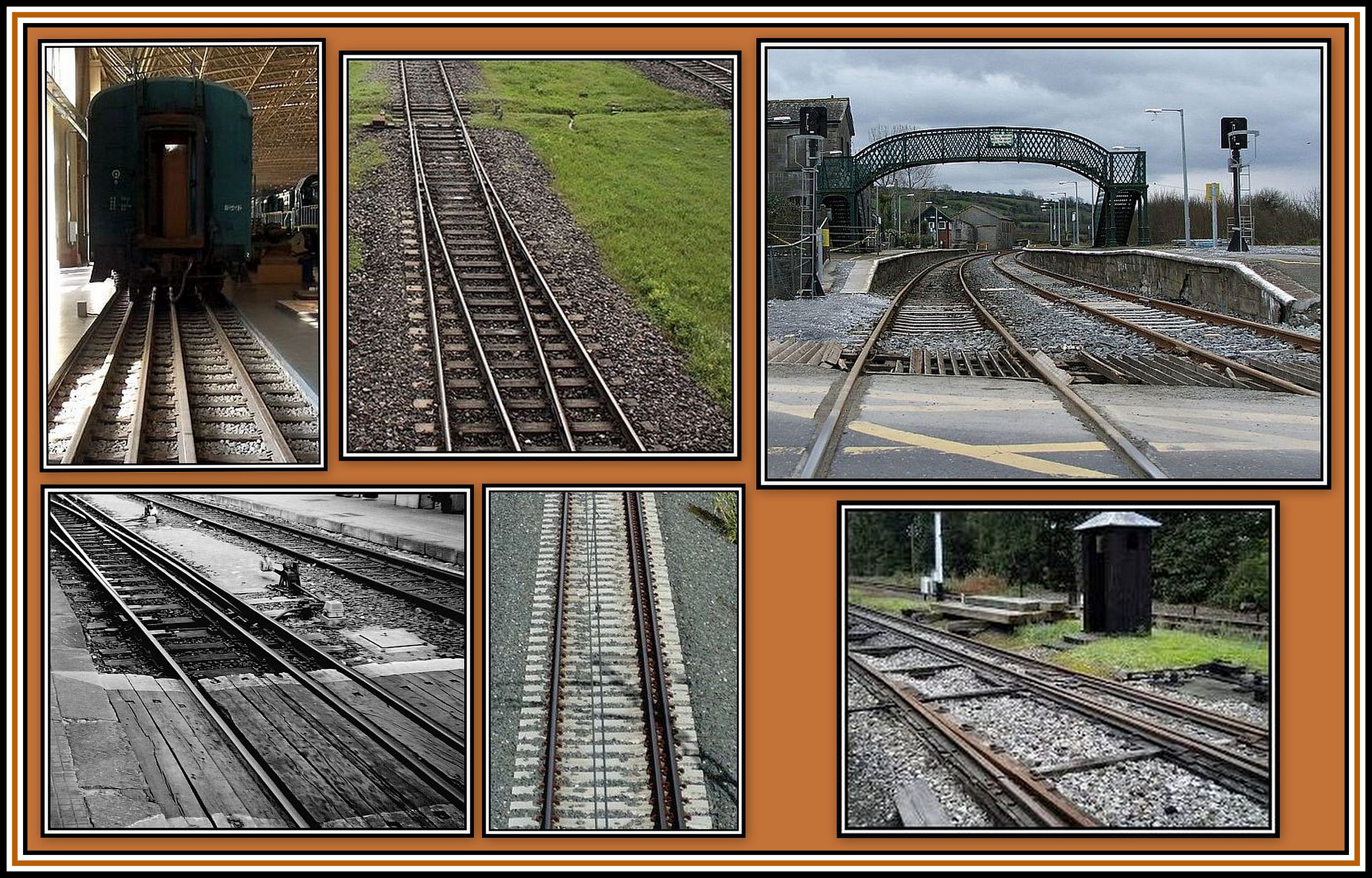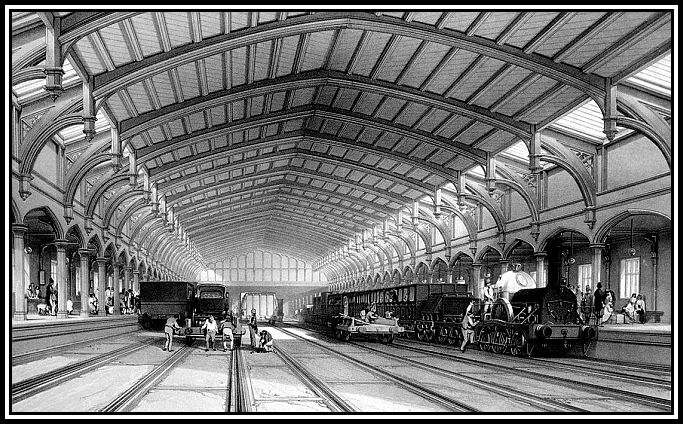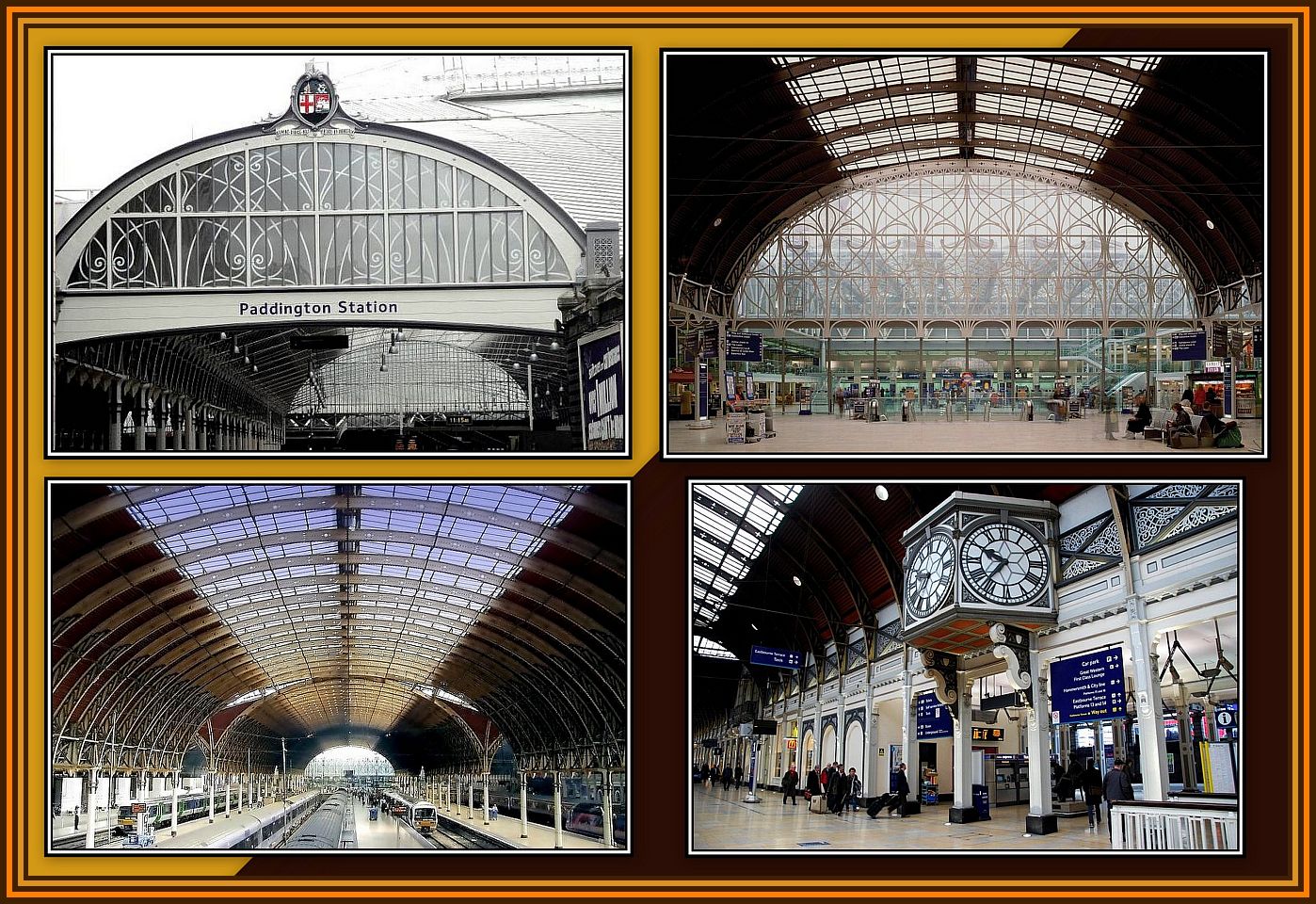ISAMBARD KINGDOM BRUNEL
Isambard Kingdom Brunel (1806-1859) was a Mechanical and Civil Engineer of great note and built the Great Western Railway, a number of steamships, dockyards, bridges, viaducts and tunnels. Brunel was, to say the least, innovative, and had a marked impact on transport and modern engineering.
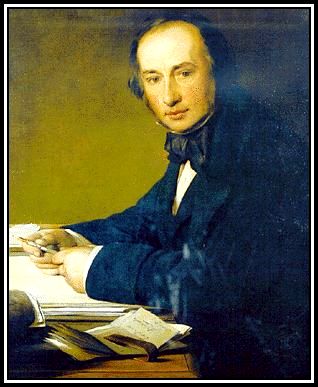
Isambard Kingdom Brunel at his desk
-oOo-
PAGE TWO: THE GREAT WEST RAILWAY
The Great West Railway (GWR) was founded in 1833 and was incorporated by an Act of Parliament in 1835 and had its first trains enter service in 1838. The GWR ran from London to Bristol and later to Exeter. Through amalgamations and extensions of lines, the GWR eventually went on to link London with the Midlands, the South-West and West of England and most of Wales with Paddington Station being its main London terminus.
-oOo-
In 1833, Isambard Kingdom Brunel was appointed Chief Engineer of the GWR, at which time he had not as yet completed his part in the building of The Thames Tunnel with his father.
Brunel advocated Broad-Gauge track of 7 feet (2,134 mm; also known as Brunel Track), as opposed to the Standard-Gauge track of 4 feet 81⁄2 inches (1,435 mm; also known as Stephenson Gauge after George Stephenson). He believed that by having large wheels outside the bodies of the rolling stock, it would allow smoother running at high speeds. Later Brunel added 1⁄4 inch (6.4 mm) to the Gauge, probably to reduce friction of the wheel sets in curves.
A Gauge War developed in 1845 between a number of Railway Companies. At this time, Broad-Gauge track totaled 274 miles, while the Standard-Gauge had reached 1,900 miles. Supporters of the Standard-Gauge claimed that since this was of greater mileage, late arrivals in the field should convert. While the Railway Companies argued, the public suffered inconvenience arising from delays and changing over on to different lines at stations where the two gauges met.
Parliament set up a Gauge Commission, which decided that Standard-Gauge was to be used by all Railway Companies. The last Broad-Gauge service left Paddington Station on Friday, 20th May 1892. Following this, Standard-Gauge locomotives were employed on all services in the U.K.
-oOo-
During the building of the GWR, Brunel was to design and built a number of remarkable structures including Viaducts, specially designed stations and vast tunnels.
The Box Tunnel, which runs between Bath and Chippenham, was the longest railway tunnel in the world at that time, was built under the direction of Brunel. Work began on its construction in 1838 and was opened on 30th June, 1841 without any ceremony. It took two years to build and one hundred men were killed during construction.
The Tunnel is 1.83 miles (2.95 kilometres) long and is straight without curves and descends on a 1:100 gradient from the east. Seemingly, the rising sun is visible through the Tunnel on the 9th April each year, which just happens to be Mr. Brunel’s birthday!
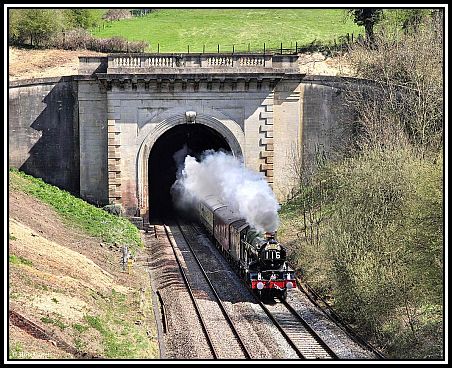 The West Entrance/Exit to the Box Tunnel; this photograph was taken by Tony Phillips
The West Entrance/Exit to the Box Tunnel; this photograph was taken by Tony Phillips
The Wharncliffe Viaduct was Brunel’s first major structural design and was built between Southall, Hanwell and West Ealing. The Viaduct is built of brick and is 886 feet long (270 metres) and 55 feet (17 metres wide). There are eight semi-elliptical arches and each spans 70 feet (21 metres) with supporting piers that are hollow and tapered.
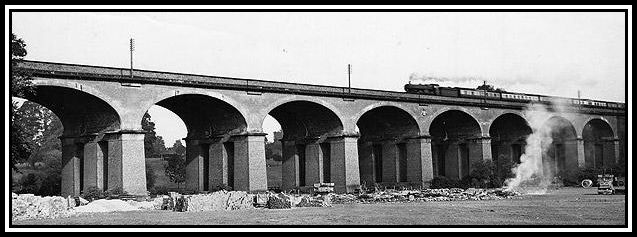 The Wharncliffe Viaduct is a Grade I listed structure and is also a World Heritage Site
The Wharncliffe Viaduct is a Grade I listed structure and is also a World Heritage Site
Brunel saw the advantages of the early Electric Telegraph system in the running of the railway. In 1838, he persuaded Sir Charles Wheatstone and William Fothergill Cooke to install their five-needle Telegraph system between Paddington and West Drayton Stations and to carry out experiments. As a result of this, the Viaduct carried the world’s first commercial Electrical Telegraph on 9th April, 1839. Later in May 1843, after the Telegraph system had been extended from Paddinton to Slough, it became Britain’s first public Telegraph service. With the growth of Telecommunication traffic, the Viaduct has also carried one of the trunk routes for the transatlantic cables and now carries fibre-optic cables.
Brunel also designed Temple Meads Railway Station in Bristol, which opened in 1840 and the present London Paddington Station, which opened in 1854.
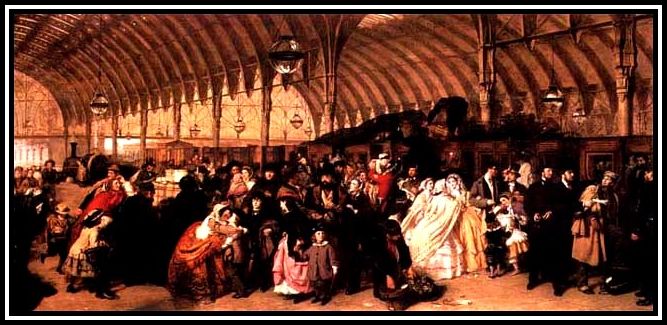 The Railway Station (Paddington Station), 1862; painted by William Powell Frith (1819-1909)
The Railway Station (Paddington Station), 1862; painted by William Powell Frith (1819-1909)
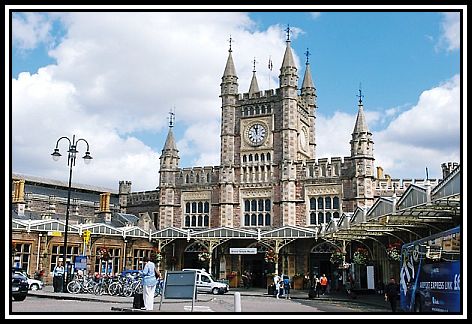 Temple Meads Railway Station; this photograph was taken by Mr. Hugh Llewelyn
Temple Meads Railway Station; this photograph was taken by Mr. Hugh Llewelyn
_oOo-
An Interesting Story has been provided by Mr. Paul Bland regarding Temple Meads Train Shed:
Engraving of Temple Meads Train Shed (1843) by John Cooke Bourne (1814-1896)
When Brunel built the train shed at Bristol’s Temple Meads, he proposed a roof unspoilt by supporting pillars. However, the GWR Directors insisted on supporting pillars and Brunel was forced to concede …. or so it seemed.
Restoration of the train shed in the 20th Century, saw engineers at the tops of the pillars for the first time since construction and guess what? Although the demanded pillars seemed to support the roof in accord with the Directors’ wishes, they, in fact, fell short of the roof by a small margin! The small distance between the pillars and the roof was impossible to perceive from the ground but, are a remaining proof of Brunel’s faith in the correctness of his own calculations.
-oOo-
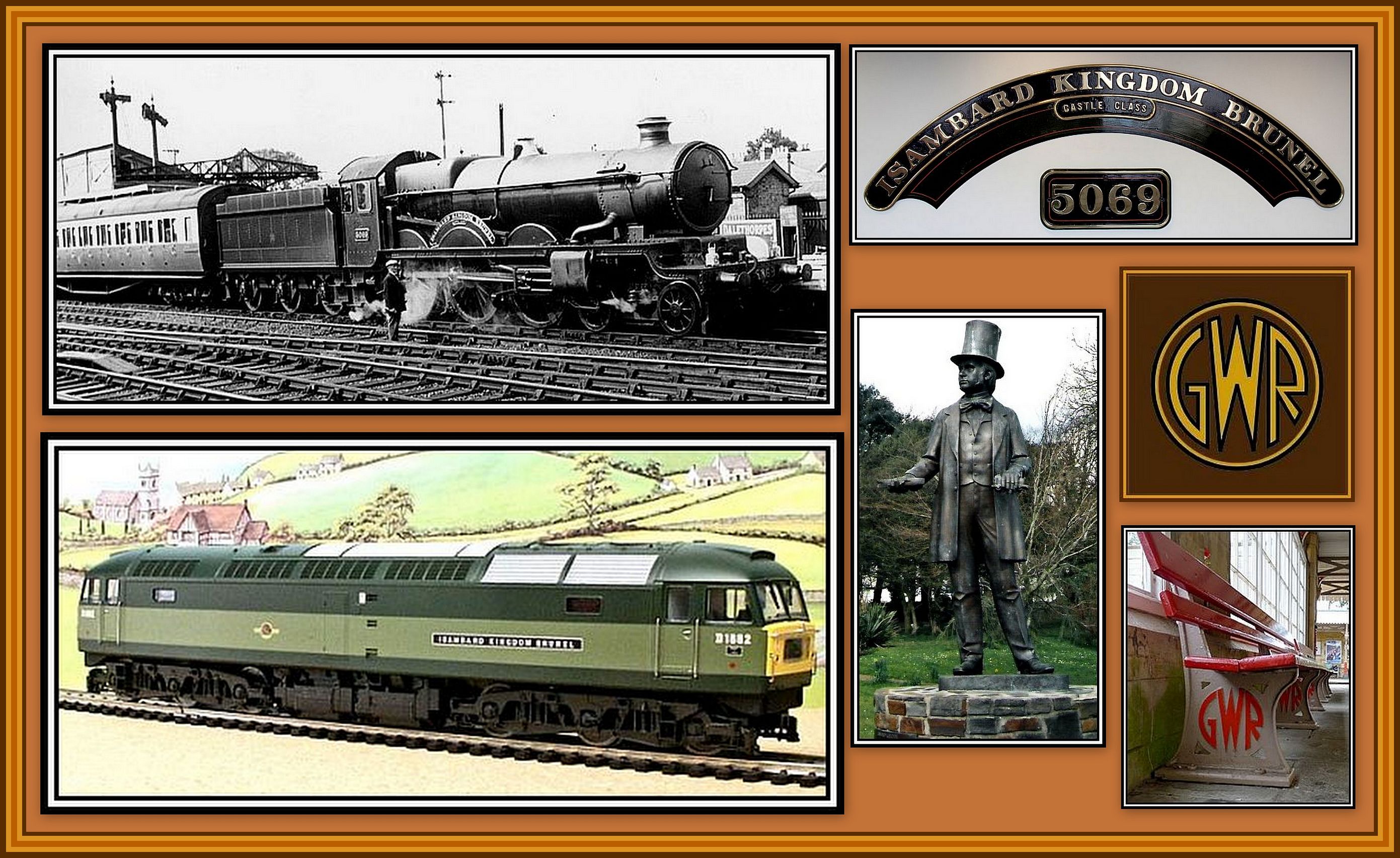 Trains named for Isambard Kingdom Brunel
Trains named for Isambard Kingdom Brunel
(Top Left) GWR 4-6-0 Number 5069, Castle Class, Built at Swindon in June 1938 and scrapped in 1962; (Bottom Left): Diesel Electric Locomotive, Class 47 Bush Type 4, Built 1962
The Statue is in the grounds of Neyland Town Council; in 1856, Neyland in Pembrokeshire. became the western terminus of the Great Western Railway and the Transatlantic Terminal for the Brunel’s steamships to the U.S.
-oOo-
The Great Western Railway has also been called
God’s Wonderful Railway, the Great Way Round and Gone With Regret!
——oooOOOooo——
Click on each of the following links to read more of
Mr. Brunel’s remarkable achievements
HOME PAGE
-oOo-
PAGE ONE: THE EARLY YEARS
-oOo-
PAGE THREE: THE BRUNEL STEAMSHIPS
-oOo-
PAGE FOUR: THE BRUNEL BRIDGES
-oOo-
PAGE FIVE: THE BRUNEL MEMORIAL
——oooOOOooo——
Readers can TWEET their LIKES & DISLIKES to me at
or
make comments on the Website’s FACEBOOK PAGE
or
consider leaving a Comment below.
——oooOOOooo——
ACKNOWLEDGEMENTS
I would like to thank Mr. Paul Bland for allowing his photographs to appear here.
I would also like to thank Ms Annie Barnes for her help and consideration and for allowing some of her photographs to appear here.
Finally, I would like to thank Mr. Dominic Rowe of the SS Great Britain Trust for his help and consideration and for allowing some of the Trust’s photographs (credited to Mr. David Noton) to appear here.
——oooOOOooo——
Click here to GO to A SERIES OF WALKS ALONG THE EMBANKMENT Home Page
——oooOOOooo——
Click here to go to PART FOUR: VICTORIA EMBANKMENT GARDENS
——oooOOOooo——
Click here to RETURN to the TABLE OF CONTENTS
——oooOOOooo——

